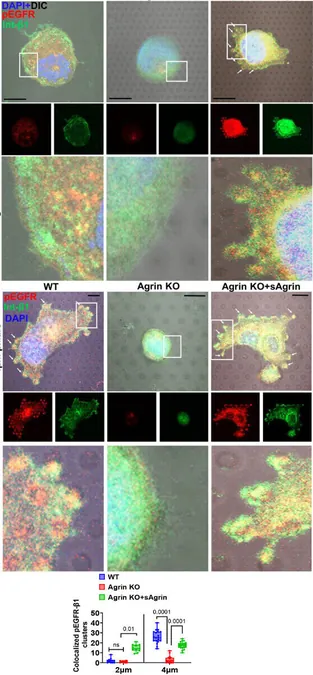
Estrogen Boosts Opioid Production in Females Post-Injury: What This Means for Pain Management
2025-04-04
Author: Daniel
Groundbreaking Research on Female Hormones and Pain Relief
Recent groundbreaking research uncovers a fascinating connection between female sex hormones and pain relief mechanisms in the body. A study conducted on lab mice reveals that estrogen and progesterone not only interact with the immune system but also trigger the production of the body’s natural painkillers, specifically an opioid known as enkephalin, following nerve injuries.
Study Insights from UCSF
In their findings, researchers from the University of California, San Francisco (UCSF) discovered that while both male and female mice produce a baseline level of enkephalin through specialized immune cells known as regulatory T cells (Tregs), it is only the females that significantly increase this production in response to injury. "After an injury, the levels of enkephalin surge in female mice but not in males," said Elora Midavaine, the study's lead author. This suggests a powerful sex-specific mechanism at play, where immune cells effectively counteract pain signals that would otherwise be sent to the brain.
Gender Differences in Pain Perception
This research sheds light on the notable differences in pain perception between genders, highlighting that women generally experience pain more intensely than men. They not only report higher pain sensitivity but are also more likely to suffer from chronic pain conditions. Historical studies have hinted at these biological differences; however, the underlying mechanisms have often been overlooked.
Exploring Tregs and Pain Sensitivity
As part of the study, the UCSF team focused on Tregs within the meninges—delicate membranes enveloping the brain and spinal cord. By manipulating Treg counts in both male and female mice, they found that depleting these cells made females more sensitive to pain, while males remained unaffected. Conversely, enhancing Treg populations in females led to a significant reduction in pain response.
Implications for Women's Health
Excitingly, the researchers also looked into how these findings apply during key life stages for women, such as pregnancy and menopause. "As hormone levels fluctuate, we’ve observed parallel changes in Treg activity and pain response," Midavaine shared, indicating a possible path for tailored pain management strategies that account for hormonal changes.
Future of Pain Management Research
Implications of this research extend beyond mere academic curiosity. With plans to identify how estrogen and progesterone influence Treg activity and opioid production, scientists hope to uncover new pain relief methods that do not rely solely on traditional opioid medications. This gender-focused lens could lead to innovative treatments that harness the body’s own pain-relieving capabilities.
Concerns Over Sex-Based Research
However, as this research unfolds, concerns loom over the future of sex-based studies, especially with potential policy changes threatening the inclusion of female models in research. Co-senior author Allan Basbaum emphasized the importance of studying both sexes: "Without a comprehensive approach, critical findings could be overlooked, which could profoundly impact pain management strategies."
The Importance of Understanding Gender Differences
The take-home message of this study is clear: understanding gender differences in pain processing is not just a scientific endeavor but a necessity for improving healthcare outcomes for both men and women. As the research continues, the promise of new therapeutic avenues could transform the landscape of pain relief in the years to come.
Stay tuned as we delve deeper into how this study might reshape our approach to pain management for women, particularly as they navigate the complexities of hormonal changes throughout life.


 Brasil (PT)
Brasil (PT)
 Canada (EN)
Canada (EN)
 Chile (ES)
Chile (ES)
 Česko (CS)
Česko (CS)
 대한민국 (KO)
대한민국 (KO)
 España (ES)
España (ES)
 France (FR)
France (FR)
 Hong Kong (EN)
Hong Kong (EN)
 Italia (IT)
Italia (IT)
 日本 (JA)
日本 (JA)
 Magyarország (HU)
Magyarország (HU)
 Norge (NO)
Norge (NO)
 Polska (PL)
Polska (PL)
 Schweiz (DE)
Schweiz (DE)
 Singapore (EN)
Singapore (EN)
 Sverige (SV)
Sverige (SV)
 Suomi (FI)
Suomi (FI)
 Türkiye (TR)
Türkiye (TR)
 الإمارات العربية المتحدة (AR)
الإمارات العربية المتحدة (AR)